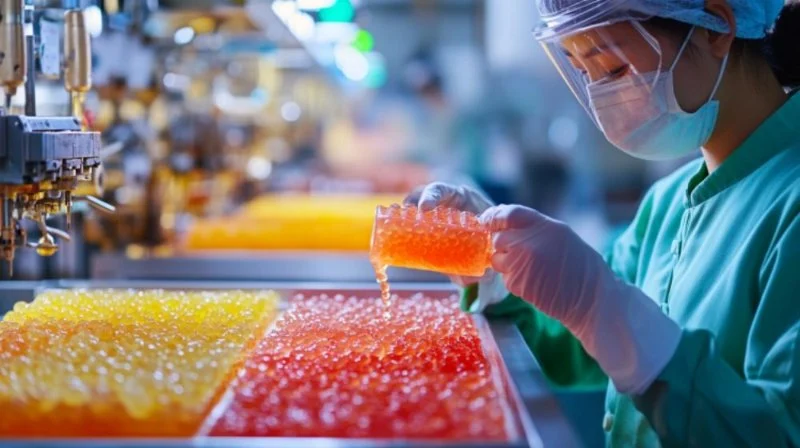
Candy Science: How Your Favorite Sweets Are Made
Candy is one of the most beloved treats around the world, and the science behind how it’s made is just as sweet as the final product. From the chewy goodness of gummy bears to the crispy crunch of a chocolate bar, candy has evolved over centuries to become the indulgence we know today. In this article, we’ll explore the fascinating world of candy science—how different types of sweets are made, the chemistry behind the process, and how candy manufacturers create the treats that delight us every day.
- The History of Candy
- The Science Behind Sugar and Sweetness
- The Candy-Making Process
- Types of Candy and Their Ingredients
- How Candy Is Packaged and Preserved
- Candy in Popular Culture
- Exploring the Magic of Candy Science
1. The History of Candy
The history of candy dates back thousands of years, with early versions being quite different from the sugary delights we enjoy today. The first candies were made from honey and fruits, which were used to sweeten food long before refined sugar became widely available. Ancient Egyptians, Greeks, and Romans all experimented with honey-based confections, and these early sweets were often served as offerings to gods or as medicinal remedies.
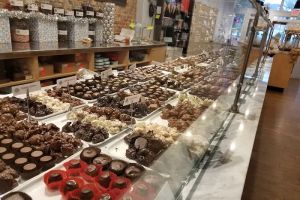
Alpine Chocolat Haus / alpine chocolat haus
322 S Main St, Plymouth, MI 48170, USA
1.1 The Evolution of Candies
Over time, sugar became more accessible, and candy-making techniques evolved. By the 17th century, sugar was being combined with fruits, nuts, and spices to create the hard candies we are familiar with today. In the 19th century, the industrial revolution allowed candy production to move from small artisanal shops to mass production, making it affordable and available to a wider population.

MarieBelle / mariebelle chocolate
New YorkNew York CountyNew York
484 Broome St, New York, NY 10013, USA
2. The Science Behind Sugar and Sweetness
The sweetness we enjoy in candy comes from sugar, but the process of turning raw ingredients into sugary delights is a bit more complex than just adding sweetness. Sugar undergoes a variety of chemical transformations during candy production, which affect the texture, color, and overall flavor of the final product.
2.1 The Chemistry of Sugar
When sugar is heated, it undergoes a process called caramelization, which gives candies their distinct color and flavor. This chemical reaction involves the breakdown of sugar molecules when exposed to heat, turning them into hundreds of compounds that add depth and complexity to the taste.
2.2 The Role of Sugar in Texture
Sugar also plays a crucial role in the texture of candy. In candies like gummies or taffy, sugar forms a gel-like structure that gives the candy its chewy consistency. The way sugar interacts with water and other ingredients determines whether the candy is soft and chewy or hard and crunchy.
3. The Candy-Making Process
The process of making candy involves several stages, from melting the sugar to shaping and cooling the candy. Here’s an overview of the basic candy-making process:
3.1 Heating and Melting
The first step in candy-making is heating the sugar and other ingredients, like corn syrup, to a high temperature. This process allows the sugar to dissolve and become a smooth syrup. For candies like hard candy or lollipops, the syrup is boiled to a high temperature to create a solid texture once cooled.
3.2 Adding Flavor and Color
Once the sugar syrup reaches the desired temperature, flavors and colorings are added. These can be natural or artificial, depending on the candy being made. For example, the vibrant colors of jelly beans or fruit-flavored gummies are achieved through food dyes.
3.3 Shaping and Cooling
After the mixture is flavored and colored, it is poured into molds or rolled into sheets to be cut into shapes. For chewy candies like taffy or gummies, the mixture is cooled and then cut into pieces, while for hard candies, the mixture is poured into molds and allowed to harden.
4. Types of Candy and Their Ingredients
Candy comes in a variety of forms, each with its own unique ingredients and preparation methods. Below are some common types of candy and the ingredients that make them special:
4.1 Hard Candies
Hard candies, like lollipops and candy canes, are made from sugar, corn syrup, and flavoring. These candies are boiled to a high temperature and hardened as they cool. The ingredients are simple, but the process is key to achieving the perfect crunch.
4.2 Chocolate
Chocolate is one of the most popular types of candy. It’s made by processing cocoa beans and combining the resulting cocoa butter and cocoa mass with sugar and milk. Dark chocolate, milk chocolate, and white chocolate all have different ratios of these ingredients, which give them their distinct flavors and textures.
4.3 Gummies
Gummy candies are made with sugar, gelatin, and flavoring. The gelatin creates the chewy texture that makes these candies so beloved. Additional ingredients, like citric acid, are often added for a tangy finish.
5. How Candy Is Packaged and Preserved
Once the candy is made, packaging and preservation are the next crucial steps to ensure that it stays fresh and appealing. Candy manufacturers use various methods to package and preserve their products:
5.1 Packaging Materials
Most candies are packaged in airtight wrappers or containers to protect them from moisture and air, which can affect their texture and flavor. Some candies, like chocolate, are packaged in foil to maintain freshness and prevent melting.
5.2 Preservatives and Shelf Life
Candy makers may use preservatives like sorbitol to extend the shelf life of their products. Gummies and hard candies often last longer due to their low moisture content, while chocolate and other confections with higher moisture content require more careful packaging to prevent spoilage.
6. Candy in Popular Culture
Candy plays a significant role in popular culture, often symbolizing happiness, celebration, and indulgence. From iconic candy commercials to its appearance in movies, candy is everywhere. Think of how characters like Willy Wonka or the Candyman have captured our imagination, or how candy-themed holidays like Halloween are a cornerstone of American culture.
6.1 Candy in Advertising
Over the years, candy advertisements have become iconic in their own right, with slogans and jingles that have stayed in our minds for decades. Whether it's the playful jingle of M&M’s or the heartwarming scenes of Hershey’s Kisses, candy ads have shaped how we view these sweet treats.
6.2 Candy and Holidays
Holidays like Halloween and Christmas are synonymous with candy. Whether it’s trick-or-treating or indulging in a box of chocolates, these sweets bring joy and nostalgia to holiday celebrations.
7. Exploring the Magic of Candy Science
Candy science is a perfect blend of art and chemistry. It involves understanding how ingredients react to heat, pressure, and cooling to form the delicious treats we love. Each candy type has its own set of principles that govern its texture, color, and taste. The next time you unwrap your favorite candy, take a moment to appreciate the science behind it!
For the best selection of candy and unique sweets, be sure to check out Gaias Candy, where we offer a wide variety of confections to satisfy every craving.

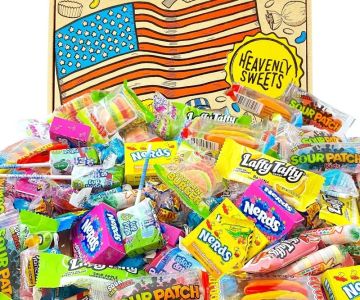
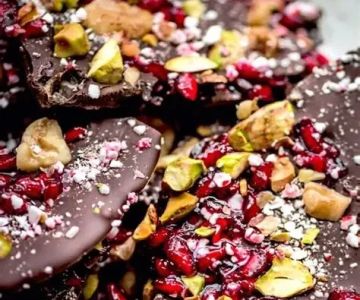
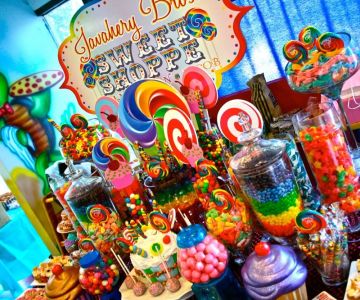

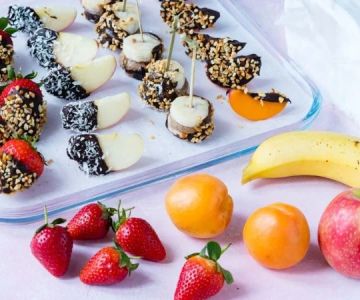

 Brandini Toffee Palm Springs4.0 (210 reviews)
Brandini Toffee Palm Springs4.0 (210 reviews) IT'SUGAR Desert Ridge3.0 (143 reviews)
IT'SUGAR Desert Ridge3.0 (143 reviews) Cynful Treats5.0 (1 reviews)
Cynful Treats5.0 (1 reviews) Lindt Chocolate Shop4.0 (217 reviews)
Lindt Chocolate Shop4.0 (217 reviews)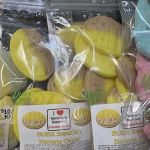 Kimmie's Kandies4.0 (27 reviews)
Kimmie's Kandies4.0 (27 reviews) Lucky Leo's Sweet Shop4.0 (51 reviews)
Lucky Leo's Sweet Shop4.0 (51 reviews) Top Candy Shops for Tourists in New York – Best Sweets and Treats
Top Candy Shops for Tourists in New York – Best Sweets and Treats Best Candy Shops in New York - A Sweet Adventure Through the City
Best Candy Shops in New York - A Sweet Adventure Through the City How to Make Candy-Themed Crafts for Christmas Gift Giving
How to Make Candy-Themed Crafts for Christmas Gift Giving How to Make Chocolate-Covered Strawberries for Kids: A Fun and Easy Recipe
How to Make Chocolate-Covered Strawberries for Kids: A Fun and Easy Recipe How to Make Easy Gummy Worms at Home | Homemade Candy Recipes
How to Make Easy Gummy Worms at Home | Homemade Candy Recipes How to Host a Candy-Themed Movie Night | Fun and Sweet Ideas
How to Host a Candy-Themed Movie Night | Fun and Sweet Ideas